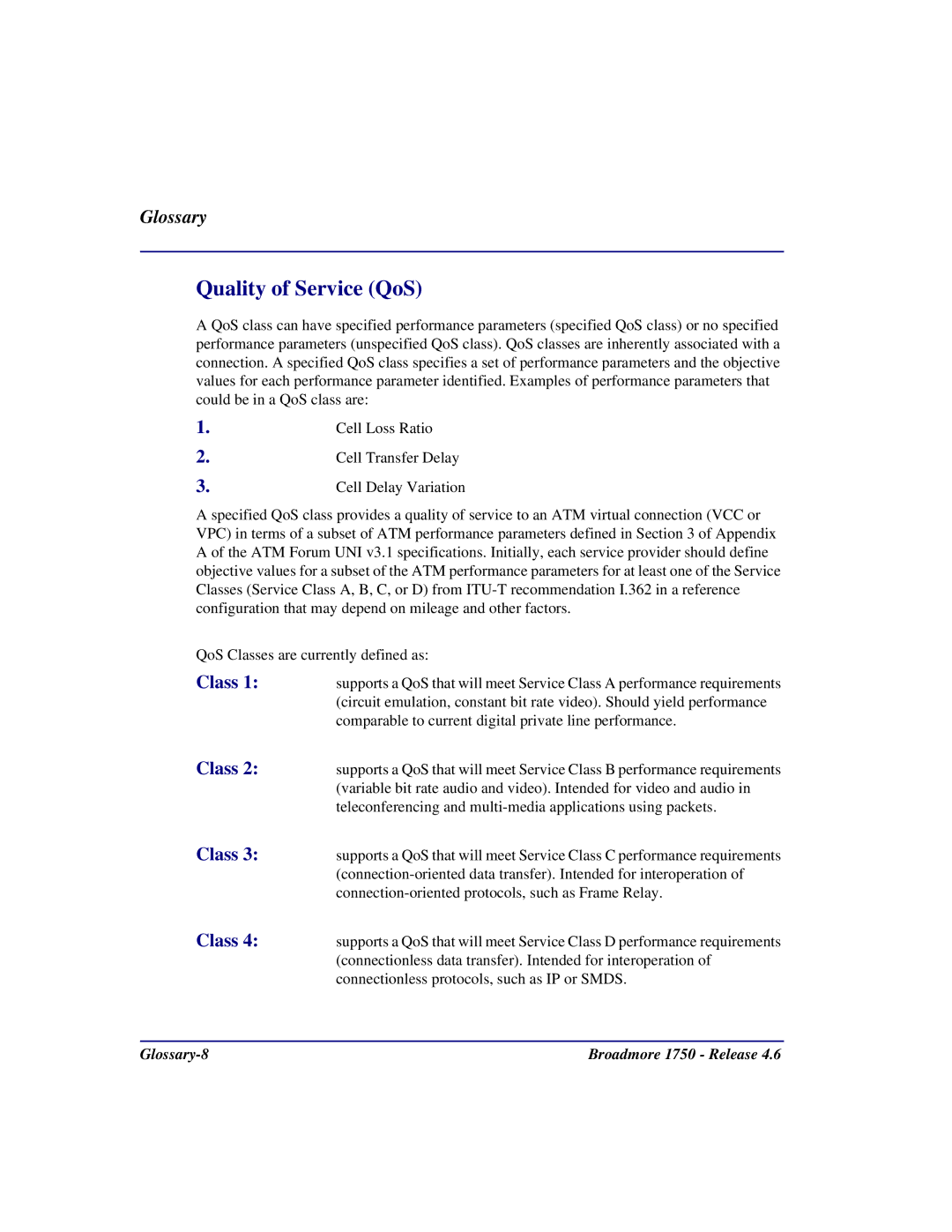
Glossary
Quality of Service (QoS)
A QoS class can have specified performance parameters (specified QoS class) or no specified performance parameters (unspecified QoS class). QoS classes are inherently associated with a connection. A specified QoS class specifies a set of performance parameters and the objective values for each performance parameter identified. Examples of performance parameters that could be in a QoS class are:
1. | Cell Loss Ratio |
2. | Cell Transfer Delay |
3. | Cell Delay Variation |
A specified QoS class provides a quality of service to an ATM virtual connection (VCC or VPC) in terms of a subset of ATM performance parameters defined in Section 3 of Appendix A of the ATM Forum UNI v3.1 specifications. Initially, each service provider should define objective values for a subset of the ATM performance parameters for at least one of the Service Classes (Service Class A, B, C, or D) from
QoS Classes are currently defined as:
Class 1: supports a QoS that will meet Service Class A performance requirements (circuit emulation, constant bit rate video). Should yield performance comparable to current digital private line performance.
Class 2: supports a QoS that will meet Service Class B performance requirements (variable bit rate audio and video). Intended for video and audio in teleconferencing and
Class 3: supports a QoS that will meet Service Class C performance requirements
Class 4: supports a QoS that will meet Service Class D performance requirements (connectionless data transfer). Intended for interoperation of connectionless protocols, such as IP or SMDS.
Broadmore 1750 - Release 4.6 |
